
A Picture Gallery of the Strongest Herbal Antibiotics in the World
Both Sida Book's Table of Contents

Sida acuta flower. Pic by William Bruneau

Sida acuta plants grow in different ways. Some hug the ground, other will shoot sraight up, while most will bush out. Pic by William Bruneau

This is my Sida jungle. There were over a hundred plants left over. As an experiment in intensive planting they got crammed into maybe 25 square feet, many inches away from each other. None died. All were of course stunted. Most shot straight up seeking light. The harvest yield was about the same as normal spacing. The long shoots with minimal side-shoots provide exceptionally long fibers of high quality. Pic by William Bruneau

Roots from well-developed first year plants. It is pretty easy to harvest these roots. If these plants went perennial in year two or three you wold not be able to dig them up. I liken first year plants to a pit bull puppy, so cute, playful and adorable; as a perennial, as an adult, it becomes a problem and obstructs your way. Pic by William Bruneau
Sida alnifolia flower. Pic by Surajit Koley - eflora of India
Sida alnifolia stalk and flower from the side. Pic by Surajit Koley - eflora of India
Sida alnifolia foliage. Pic by Surajit Koley - eflora of India
Sida cordata plant with seed pods. Pic by eflora of India
Sida cordata plant with flowers. Pic by eflora of India
Sida cordifolia flower with seed pods. You can see the green seed pods all around the flower with one mature seed pod emerging on the left. Pic by Prashant Awale - eflora of India
Sida cordifolia plant with buds and one flower. Pic by Prashant Awale - eflora of India.
Sida cordifolia plants with holes in the leaves. While India has evolved Sida parasites, I have not noticed any plant damage in Mendocino county. Pic by Prashant Awale - eflora of India
Sida cordifolia seed pod. Pic by Prashant Awale - eflora of India.
Sida mysorensis flower with seed pods. Pic by Vijayasankar Raman - eflora of India
Sida mysorensis plant with emerging flowers. Pic by Vijayasankar Raman - eflora of India
Sida ovata flower and stalk. Pic by Dr. Gurcharan Singhe - flora of India
Sida ovata stalk with flower and seed pods. Pic by Dr. Gurcharan Singhe - flora of India
Sida rhombifolia stalk with flower. Pic by
Dr. Subhasis Panda & Balkar Singh - eflora of India
Sida rhombifolia plant with flowers. Pic by Dr. Subhasis Panda & Balkar Singh - eflora of India
Sida rhombifolia plant with flowers. Pic by Dr. Subhasis Panda & Balkar Singh - eflora of India
Sida spinosa flower, leaf and bud. Pic by Dr. Balkar Singh & Dinesh Valke - eflora of India
Sida spinosa stalk with flowers and buds. Pic by Dr. Balkar Singh & Dinesh Valke - eflora of India
Sida tiagii flower with leaves and seed pods. Pic by N.S.Dungriyal - eflora of India
Sida tiagii plant with flowers. Pic by N.S.Dungriyal - eflora of India
Rub-a-dub, ten plants in my tub. I was able to grow 4 plants in a small tub like this, and around 6 plants in a 5 gallon tub. Pic by William Bruneau.
I strongly recommend using deep flats for starting Sidas. All the plants in this flat are root-bound, but they all survived transplanting right after this pic. While Sidas are remarkable in their ability to survive abuse, there are limits. A happy, well-fed Sida is a very medicinal Sida. Pic by William Bruneau.
Given room a Sida acuta plant will spread pretty much like this. Usually they will then turn vertical but no guarantees with Sida! Sidas grow every which way. Sidas go where Sidas want. When there isn't room like this to spread, it will go straight up after light. Pic by William Bruneau.
You can see much random behavior here, but its all leading to the ground being covered. A good bed should end up at least a couple feet high. Pic by William Bruneau.
Mature Sida bed. In this case you are looking at my Sida jungle (previously mentioned). The plant spacing here is something like one inch. This led to vertical growth with minimal side branches. The leaves ended up a green that was visibly paler. A plus is that the long stalk fiber could be several feet long. Pic by William Bruneau.
Even if you do not have ground space for a garden, you can grow Sida as a container plant. Given a comperable amount of space they produce as well as beds. Pic by William Bruneau.
Sidas are jungle plants. They like things warm and moist. Dry and hot will permanently stunt them. In cooler gardens, growing against a west-facing wall that is warmed helps to moderate the immediate climate and generally keep the plants warmer and happier. Pic by William Bruneau.
I am deeply grateful for the use of photos of some other Sida species from the Google "eflora of India" group, of which I am proud to be a member (https://sites.google.com/site/efloraofindia/). Our goal is to selflessly photograph all the medicinal plants in India and make them freely available to the public. This is a huge site with hundreds of medicinal plants, plus all sorts of other useful information. A must visit if your interest is in Indian medicinal plants.
Sida alnifolia
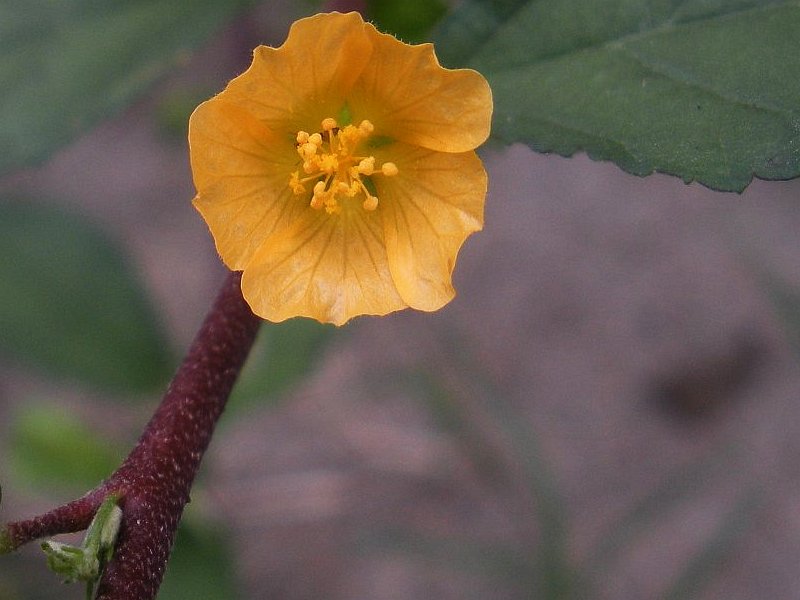
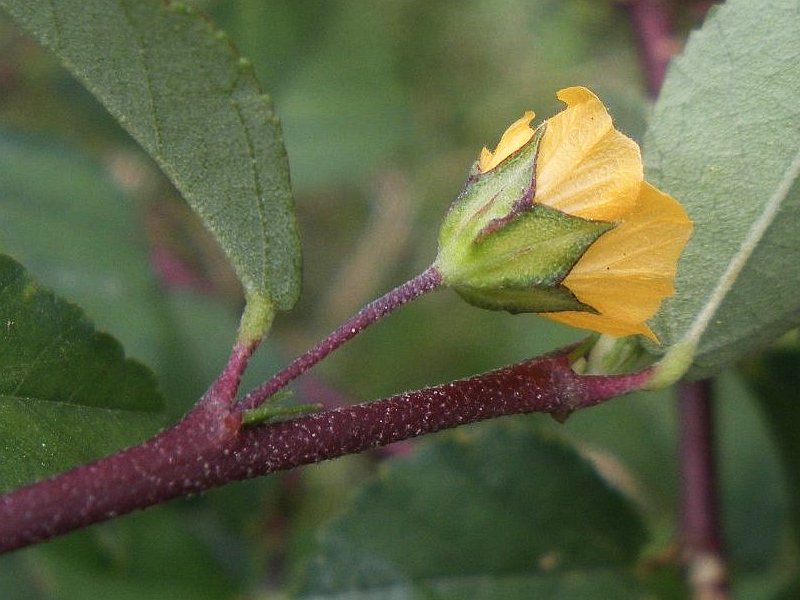
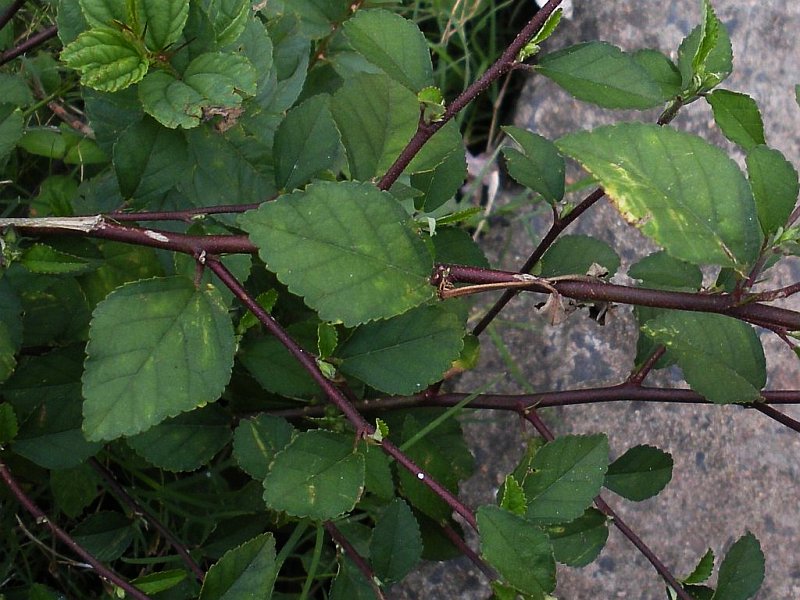
Sida cordata
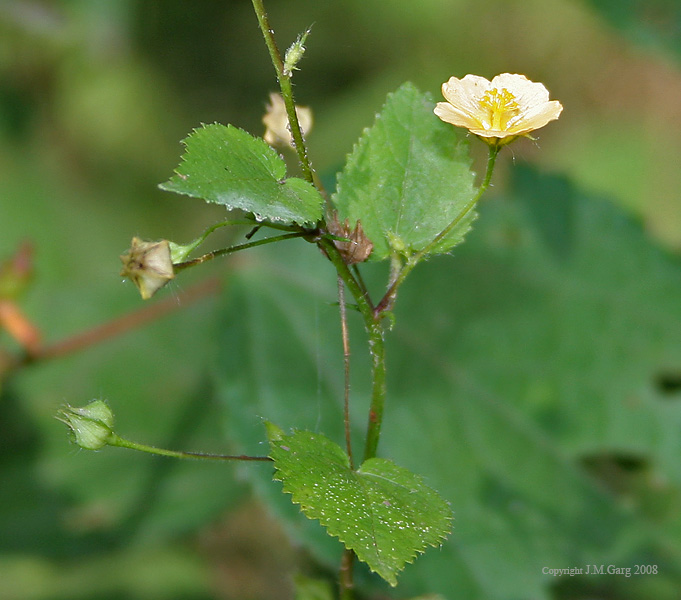

Sida cordifolia
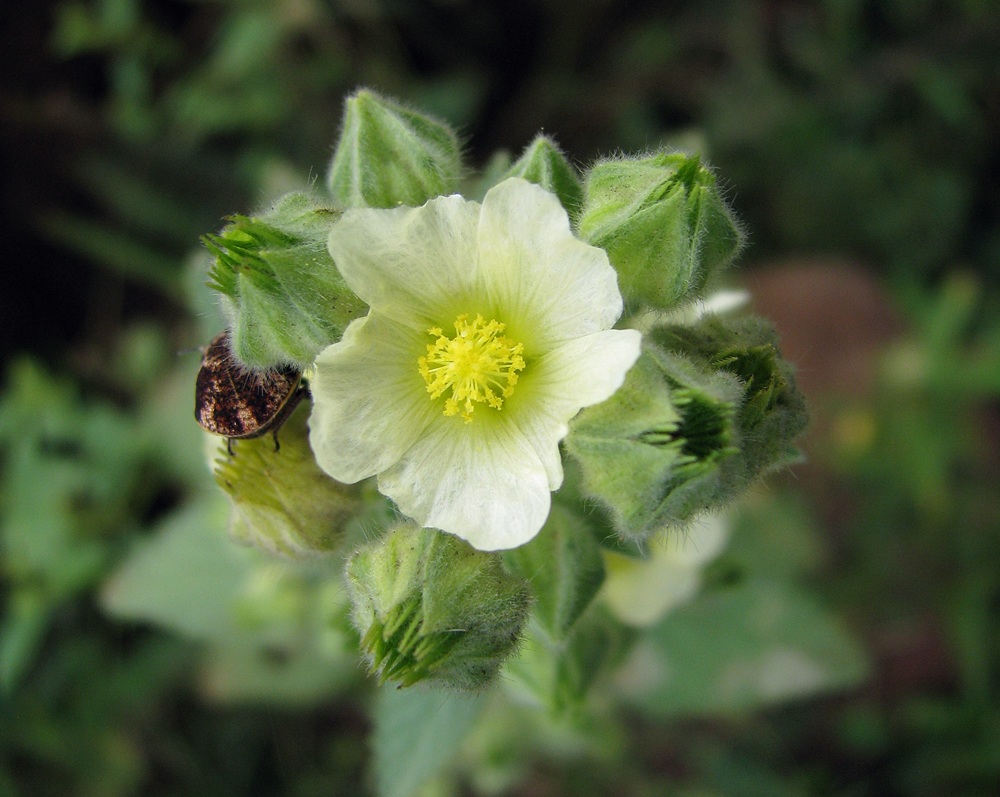
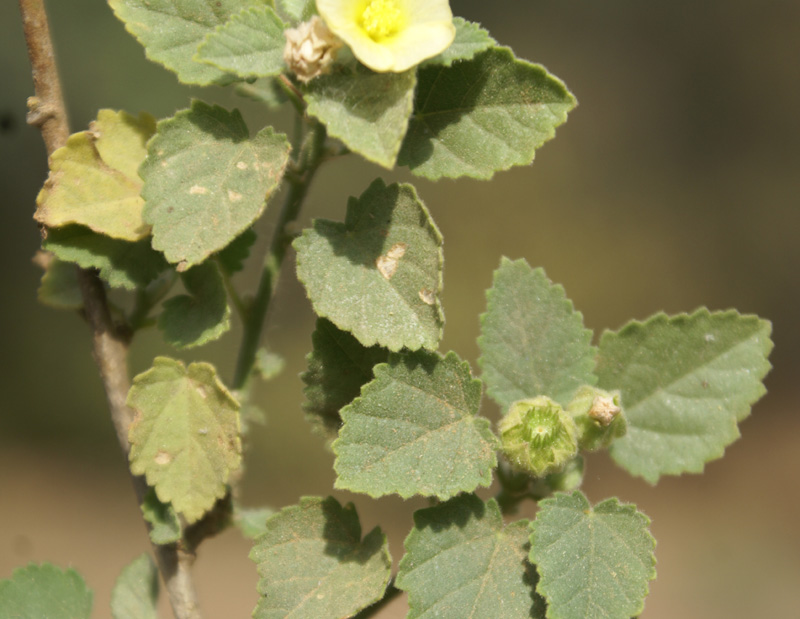
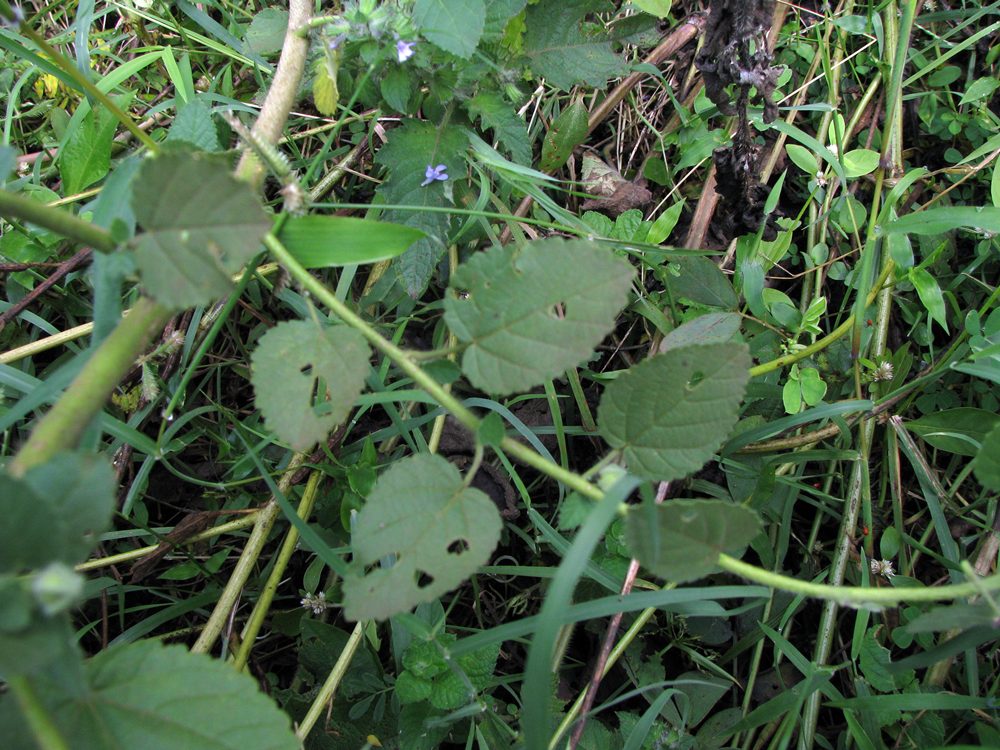
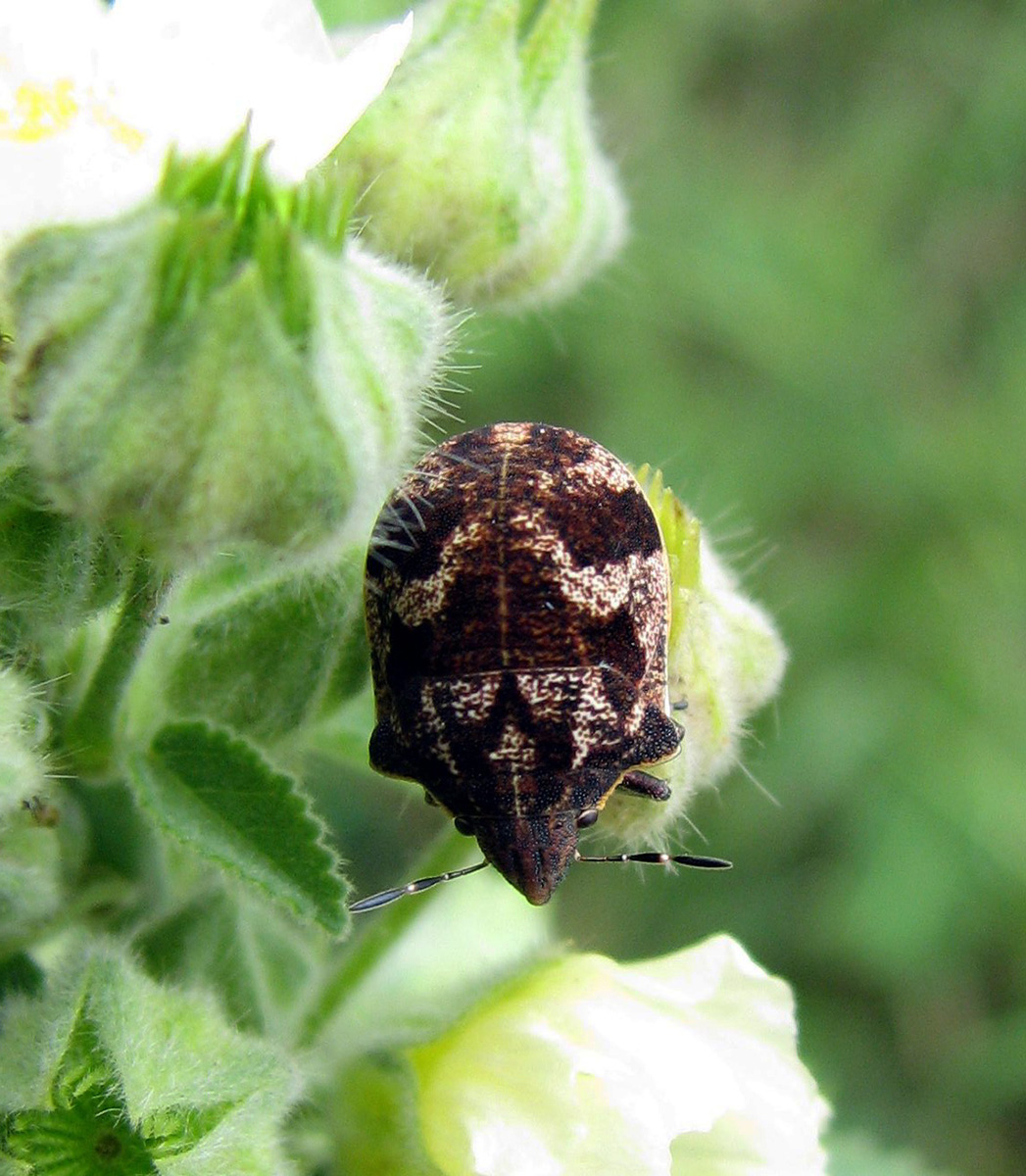
Sida mysorensis
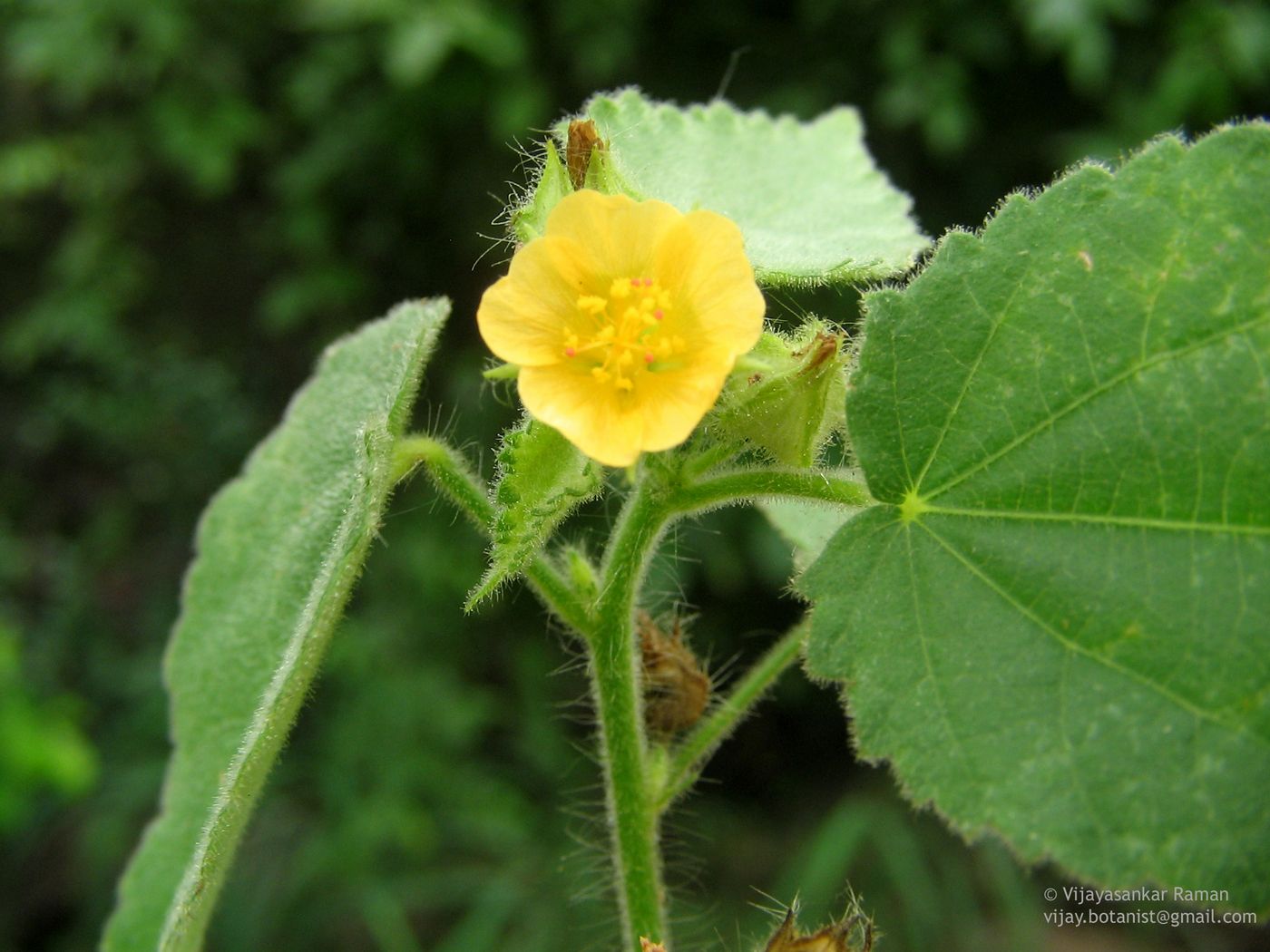
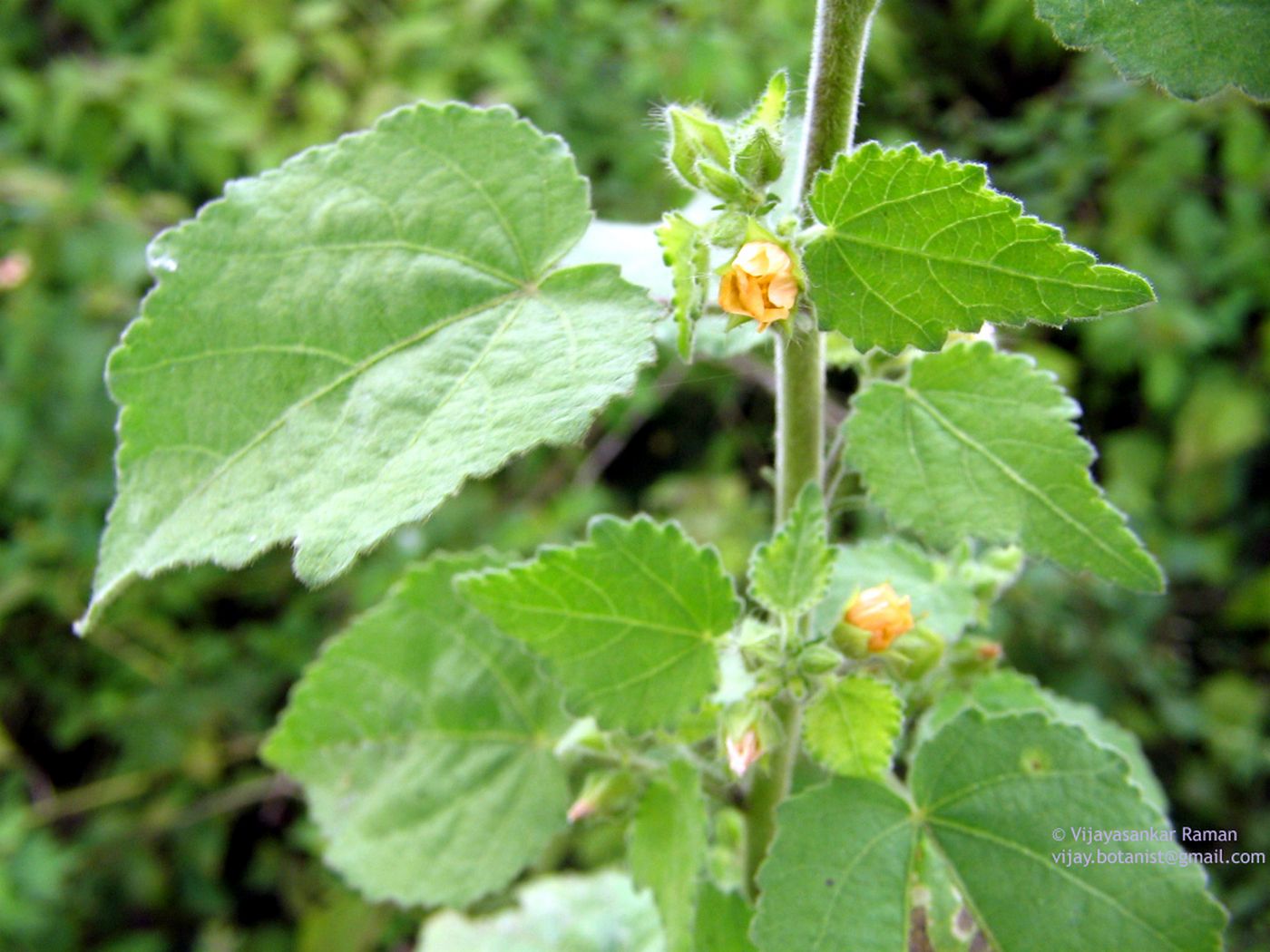
Sida ovata
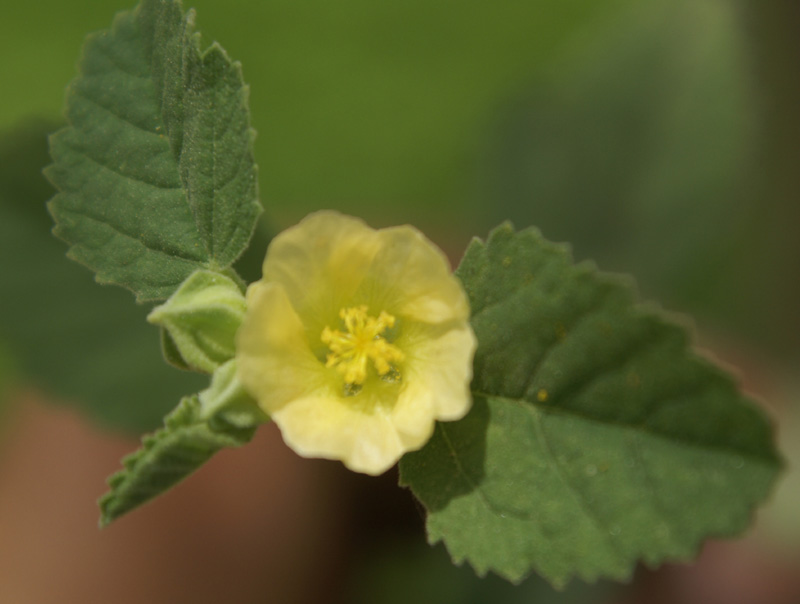
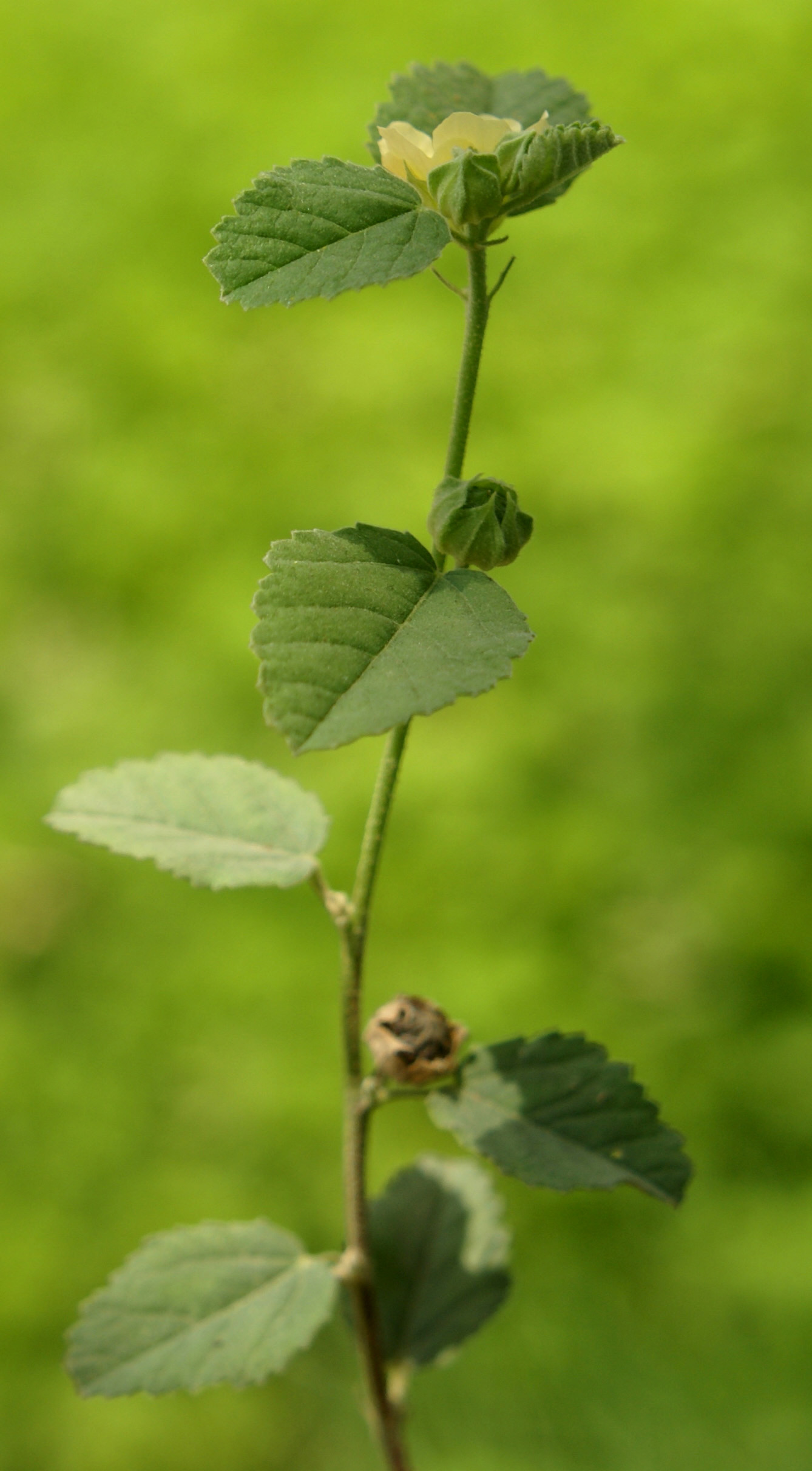
Sida rhombifolia
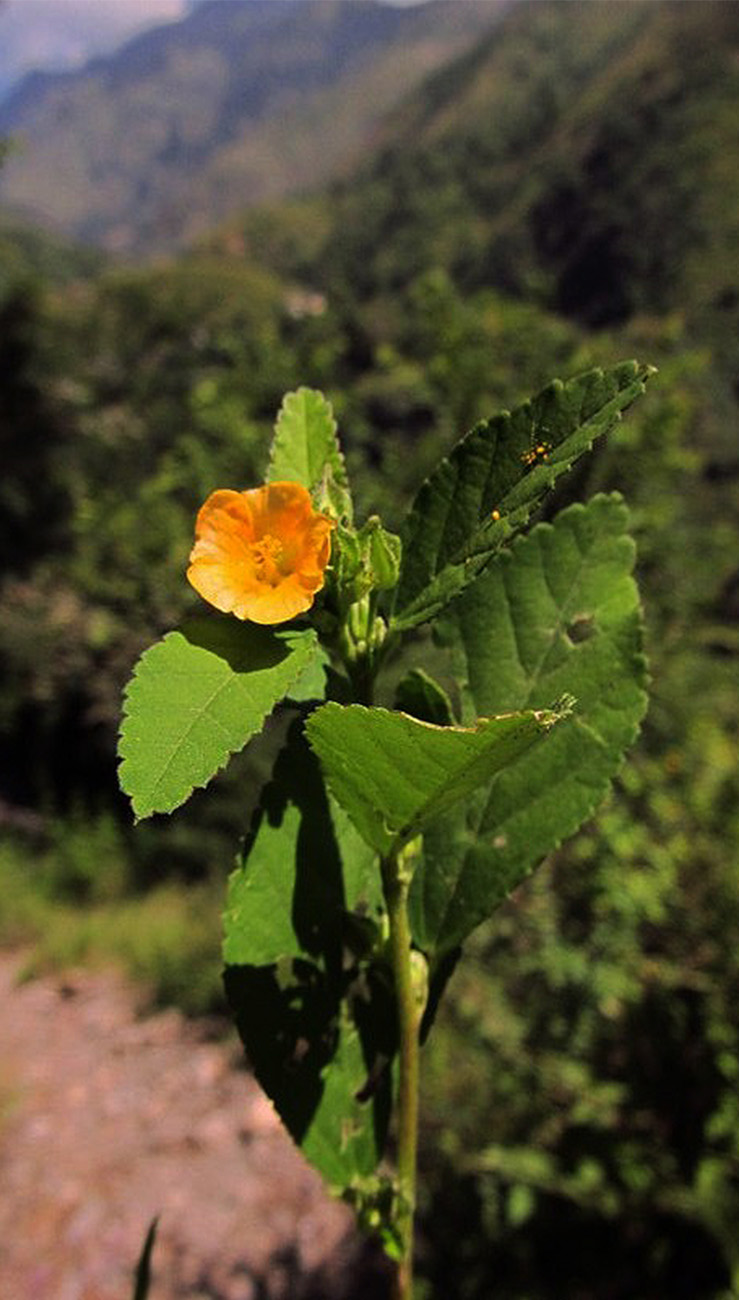
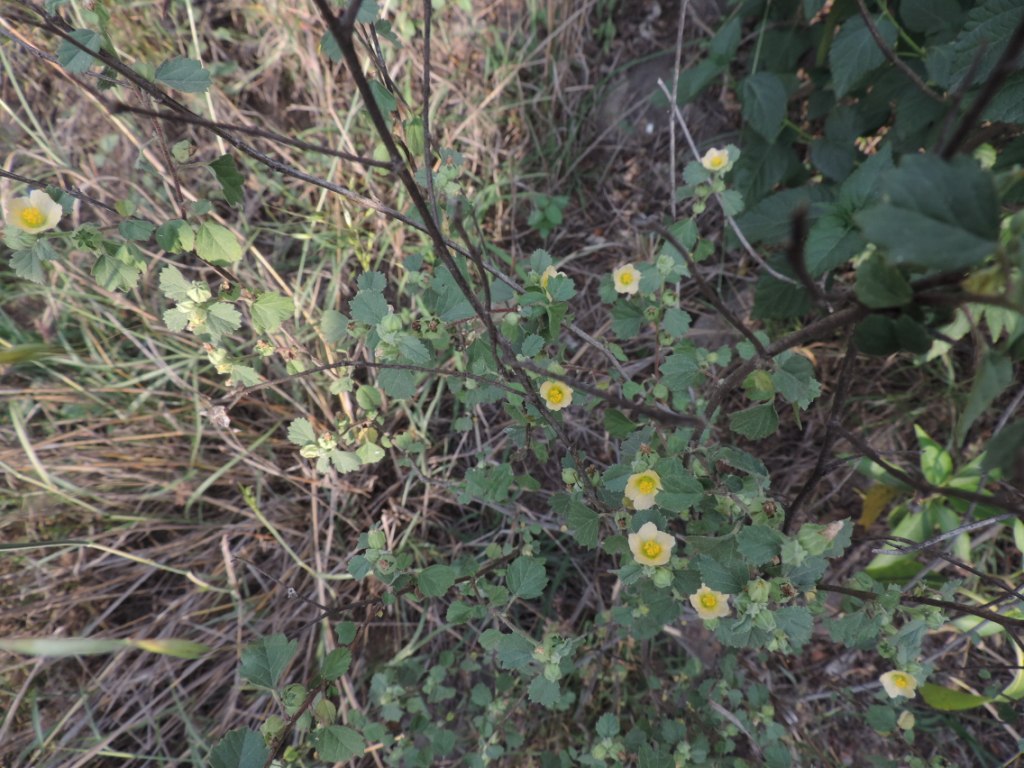
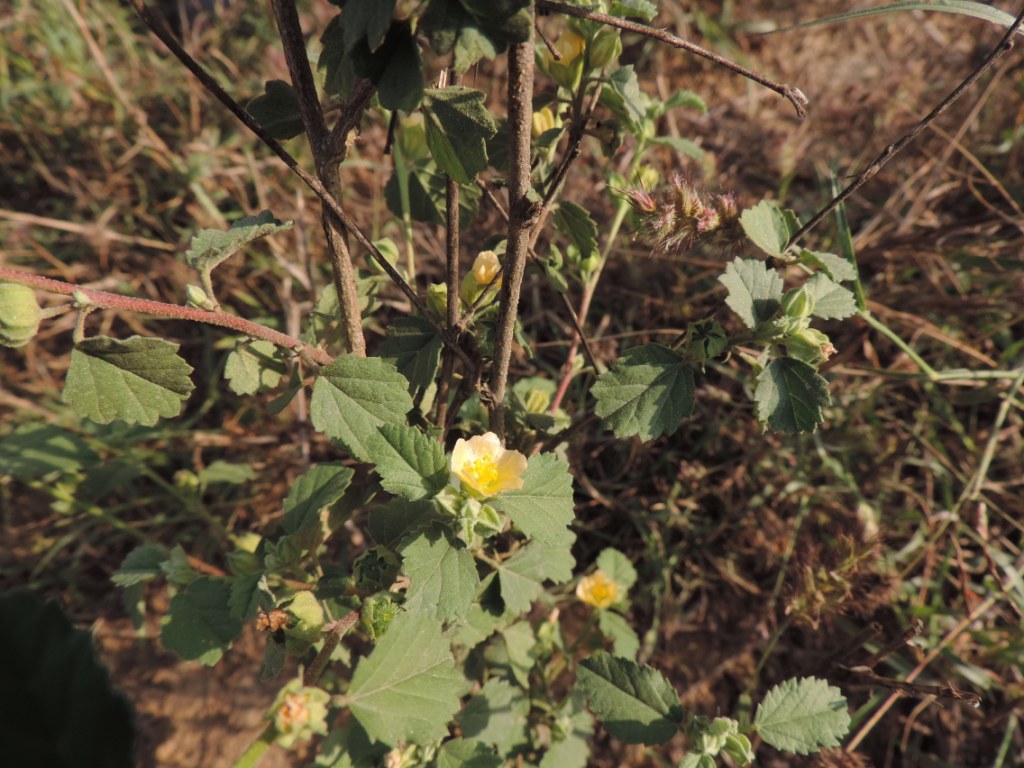
Sida spinosa
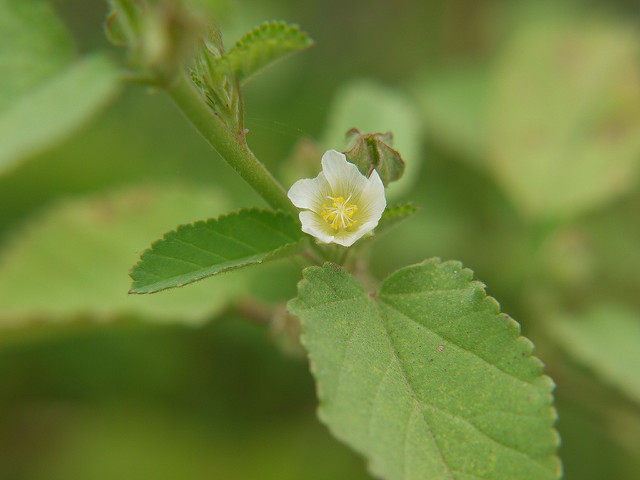
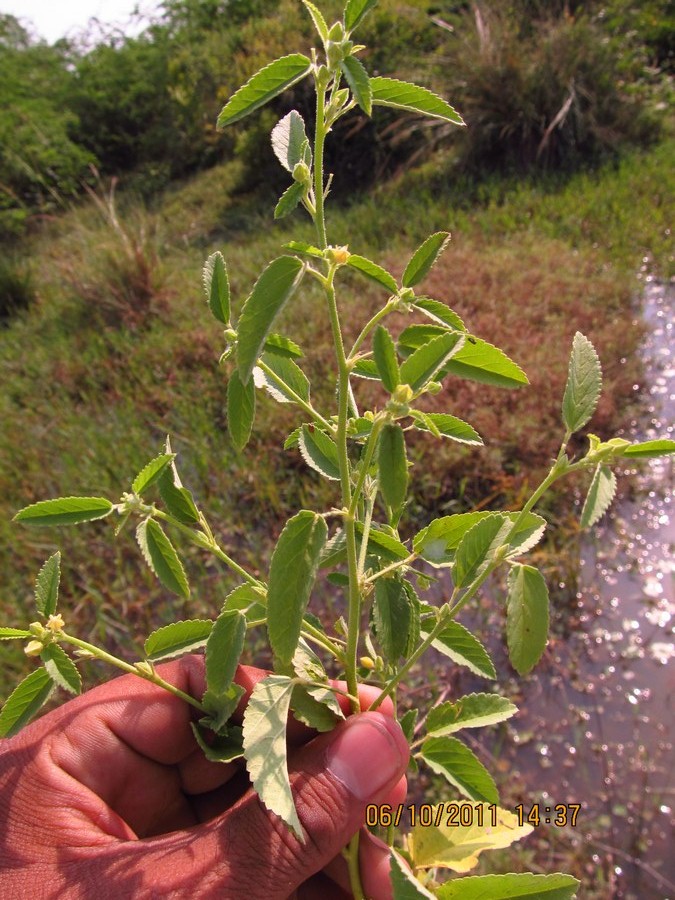
Sida tiagii
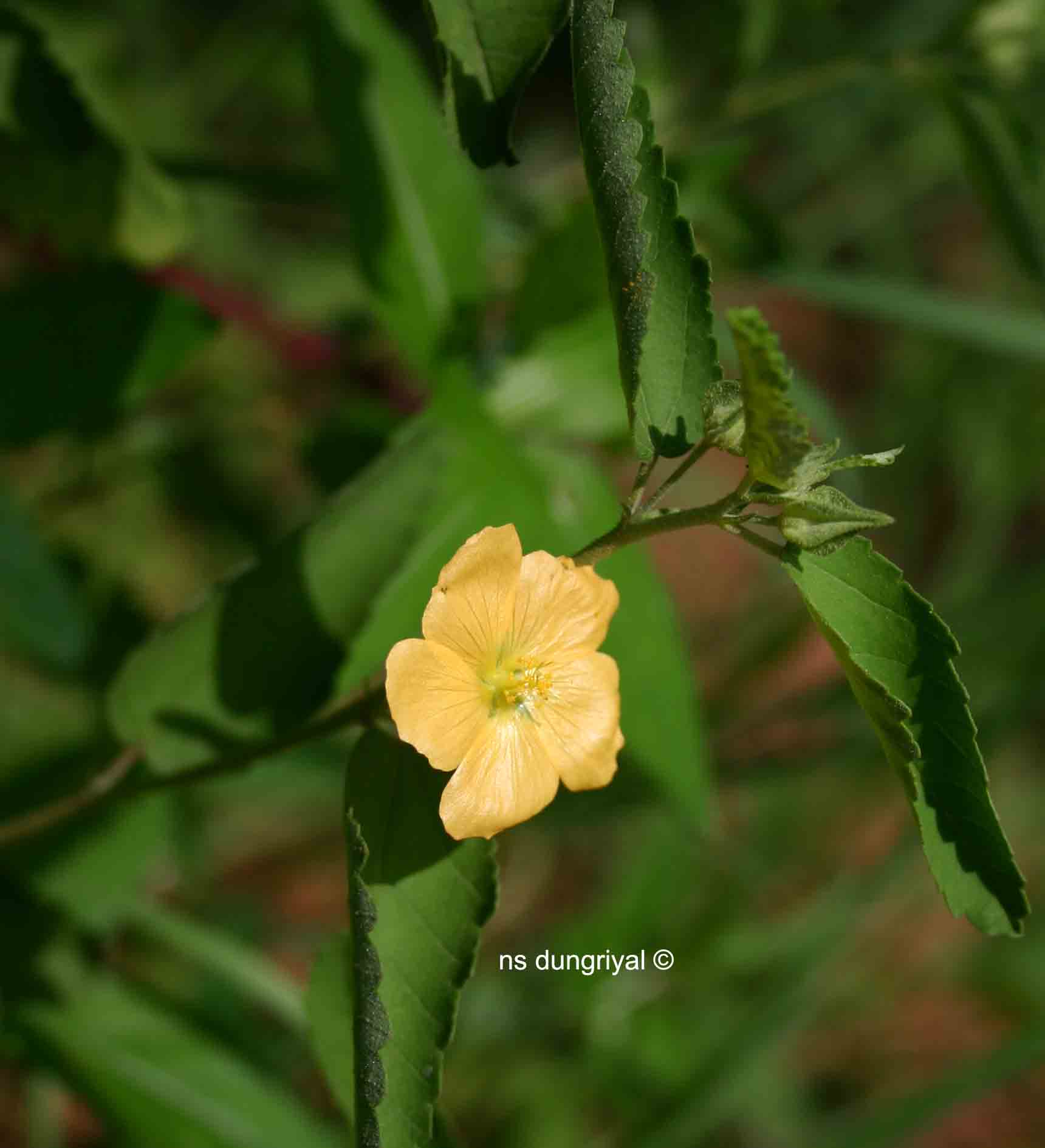
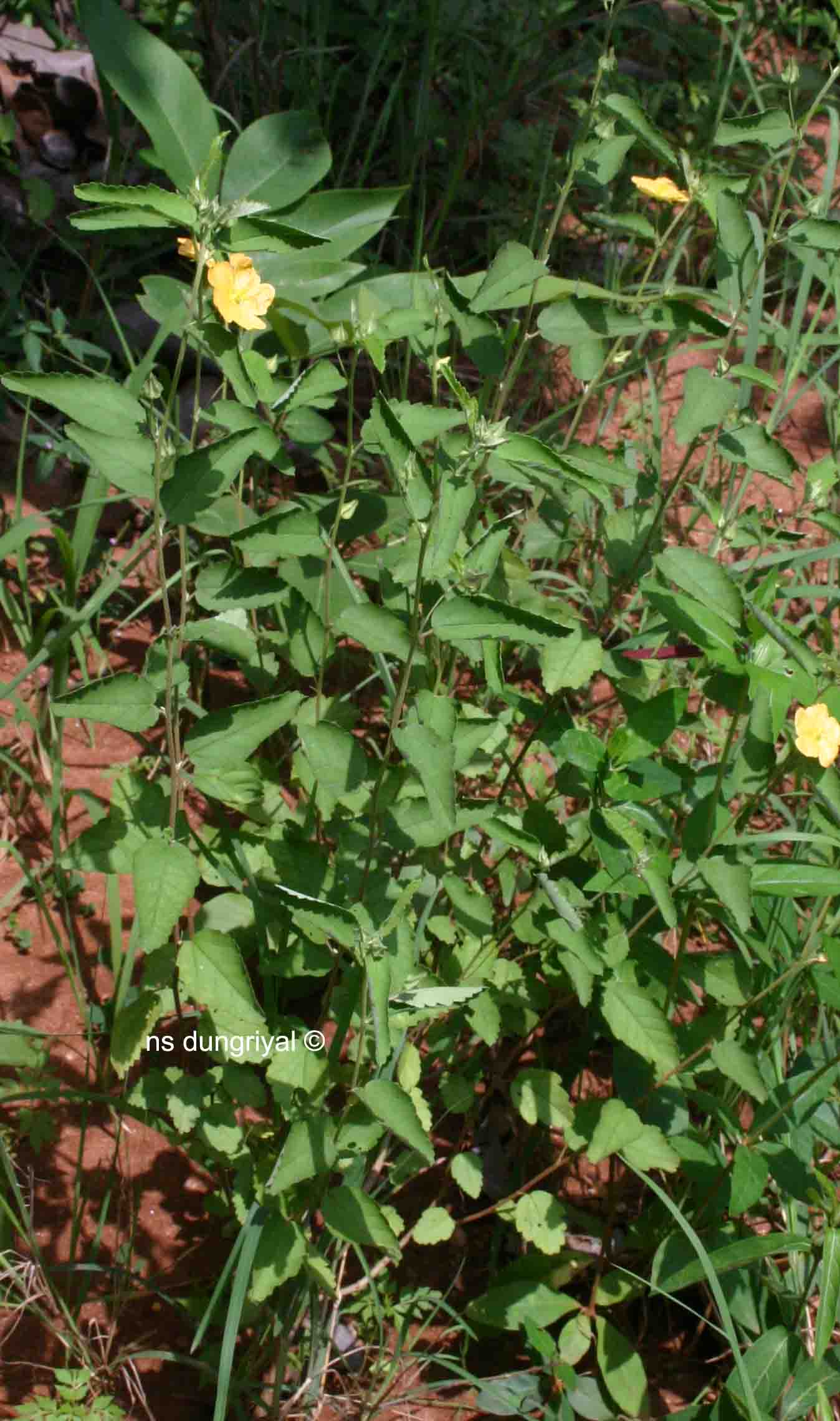

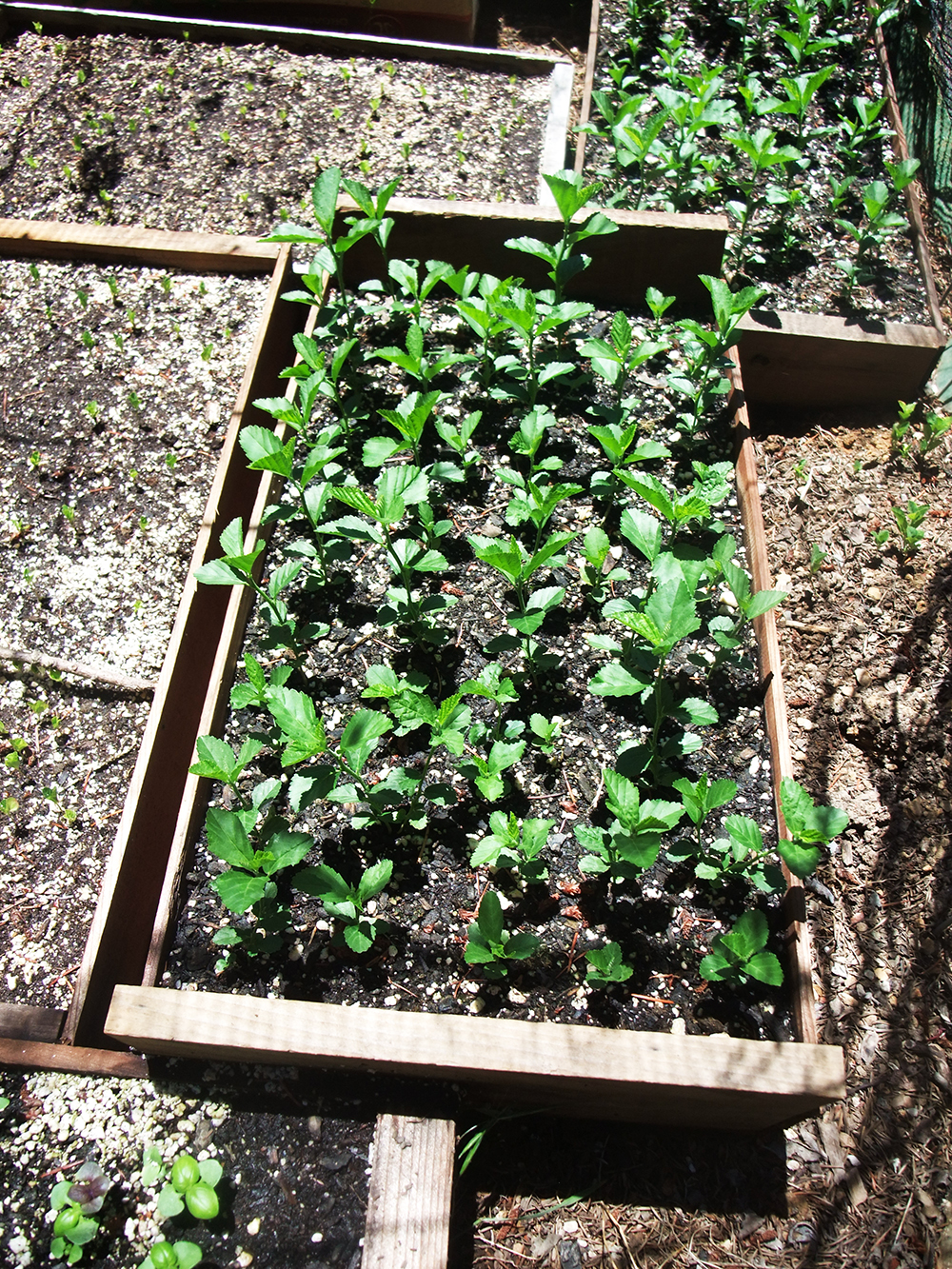
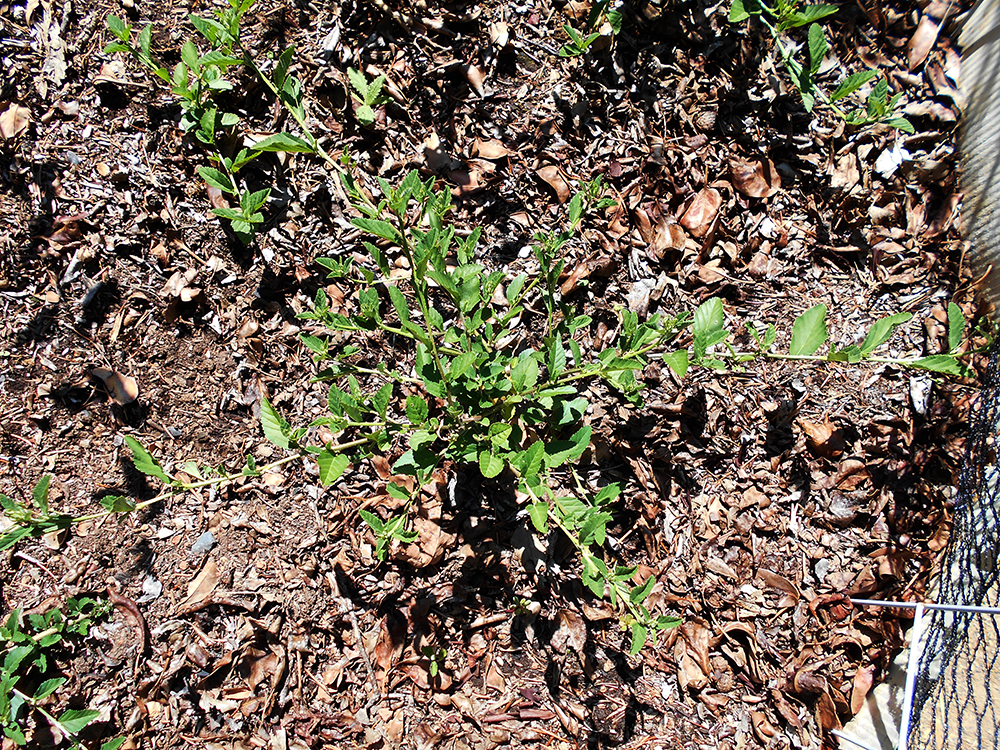


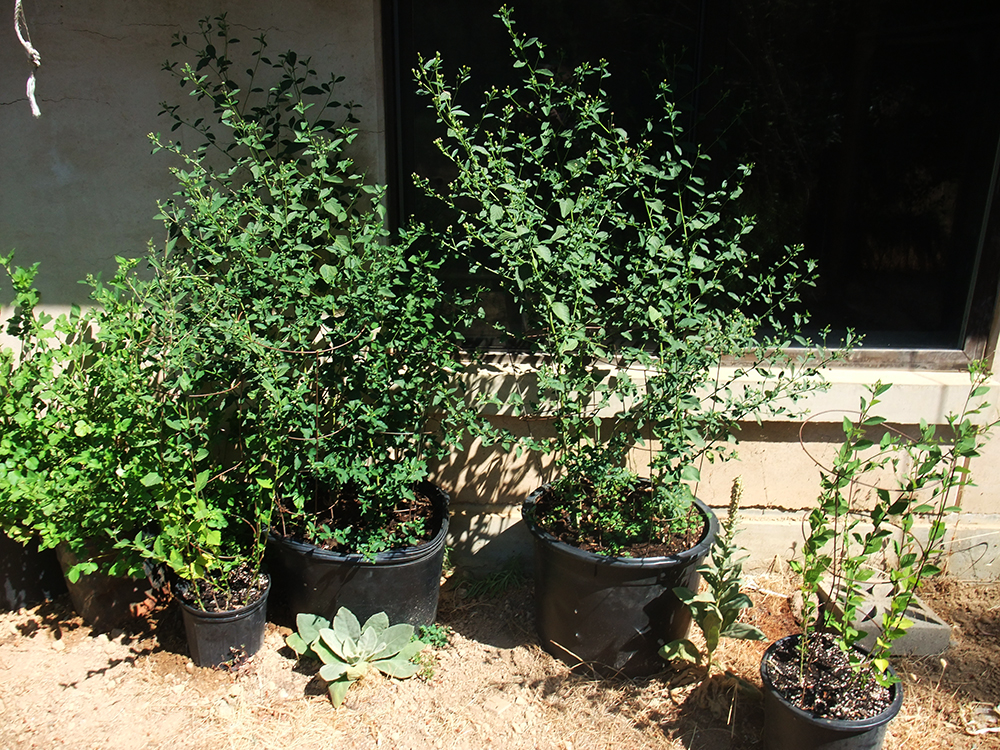
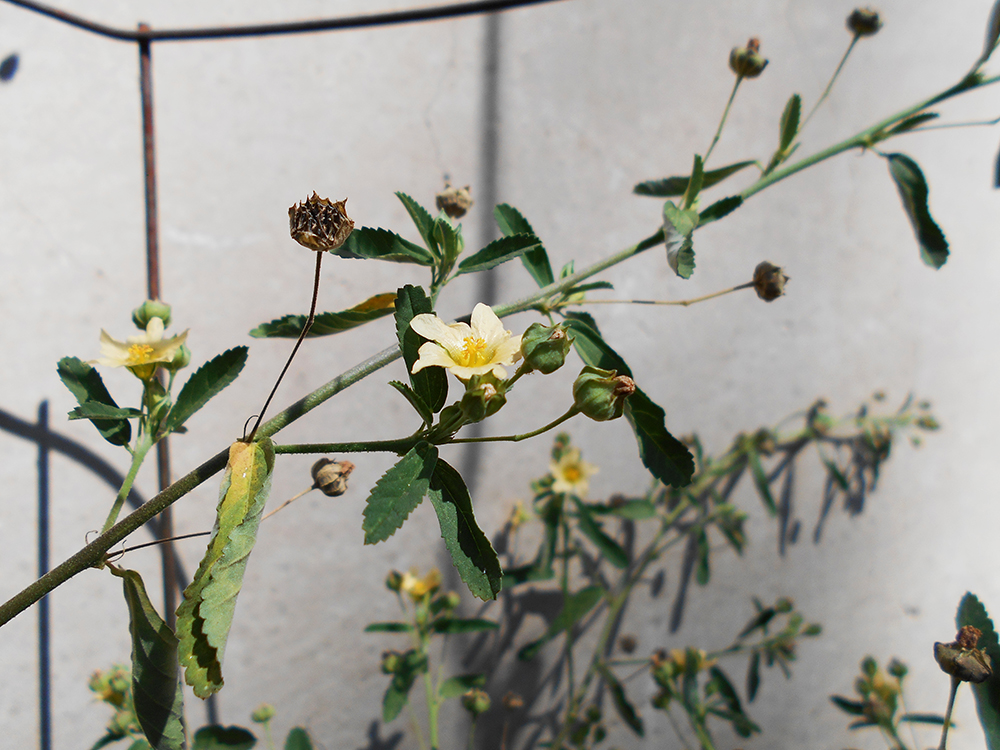
| top |
|
Bill and Betsy Bruneau
18001 Shafer Ranch Road, Willits, CA 95490-9626 USA
Website: www.bbruneau.com
Copyright 2007-2020, William Bruneau